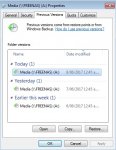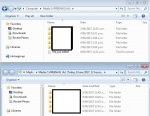SwisherSweet
Contributor
- Joined
- May 13, 2017
- Messages
- 139
Since snapshots take up very little data, is there any issues to setting the snapshot lifetime to 1 year?
While I don't imagine I'd need to revert the file system to what it was 1 year ago, it would give me some comfort that I know that I could restore the dataset back to what it was one year ago if I accidentally deleted something important.
Assuming, I did revert the dataset to the state it was 1 year ago, can it easily be reverted back to current state once I get what I needed?
While I don't imagine I'd need to revert the file system to what it was 1 year ago, it would give me some comfort that I know that I could restore the dataset back to what it was one year ago if I accidentally deleted something important.
Assuming, I did revert the dataset to the state it was 1 year ago, can it easily be reverted back to current state once I get what I needed?


